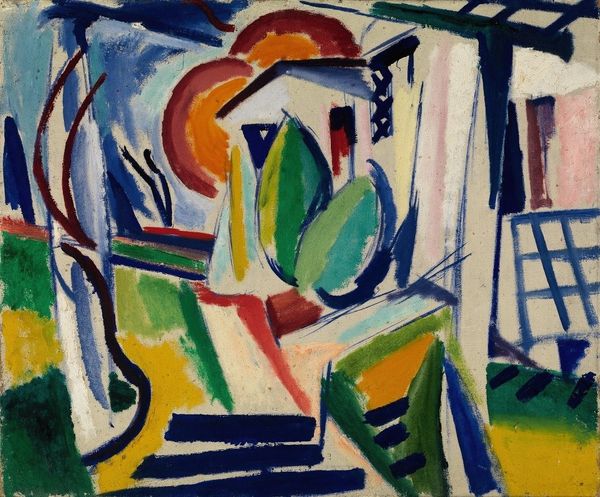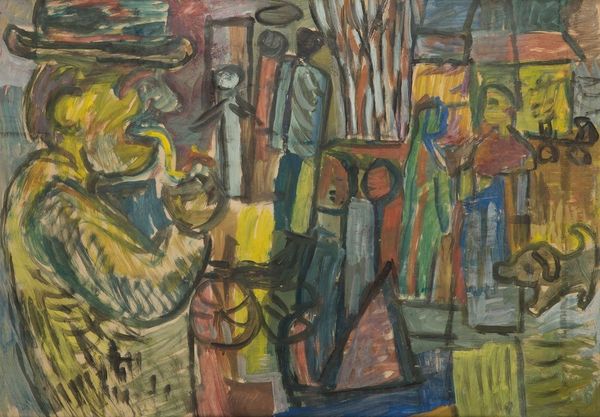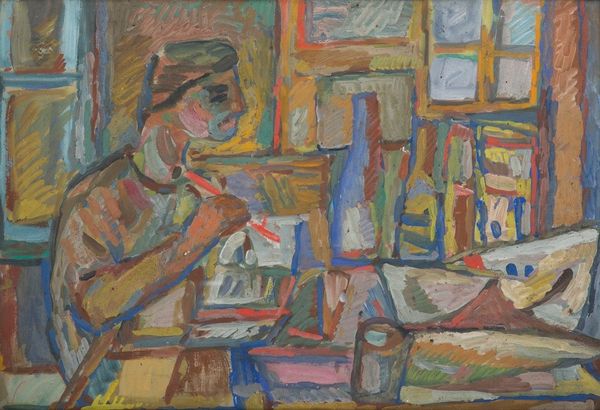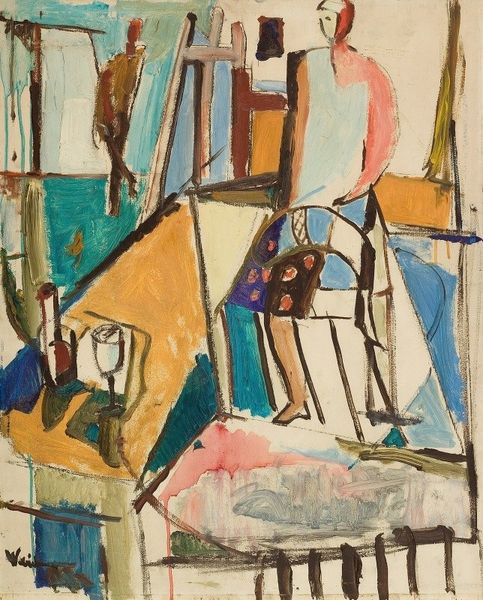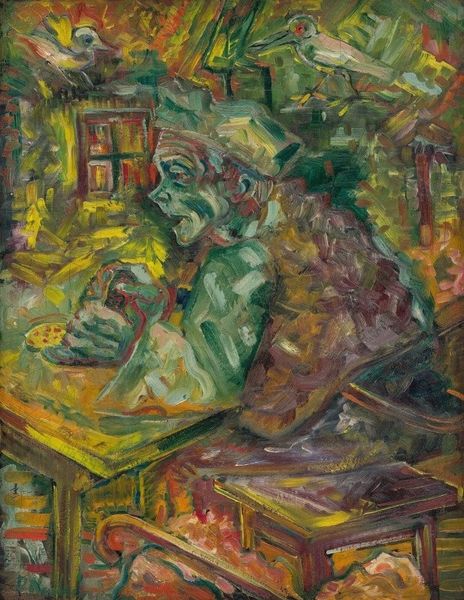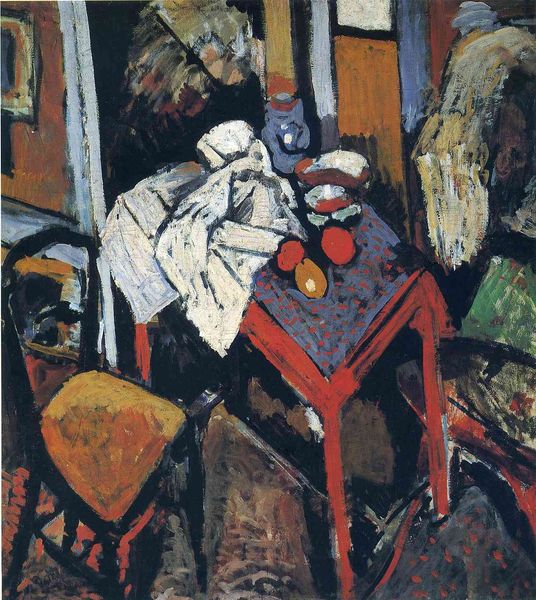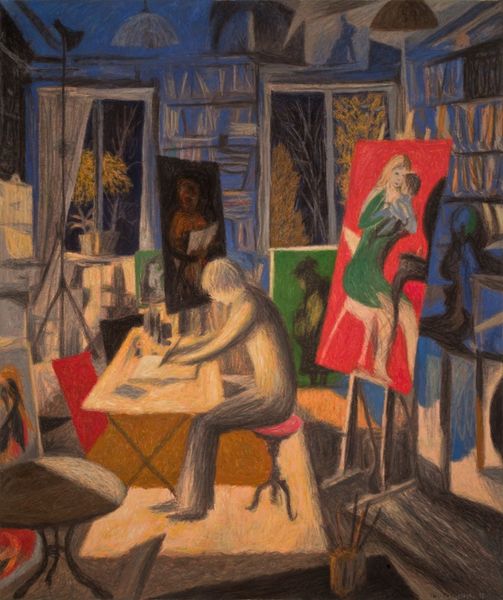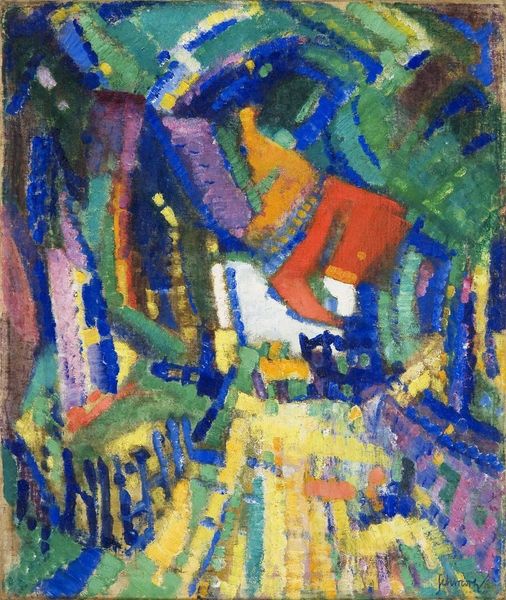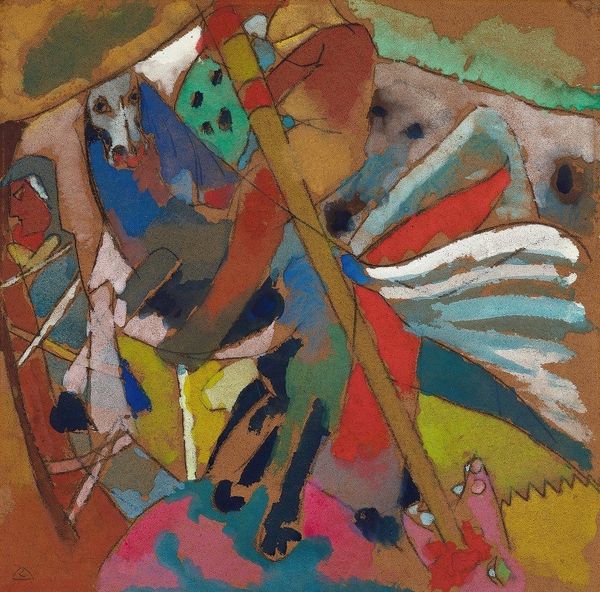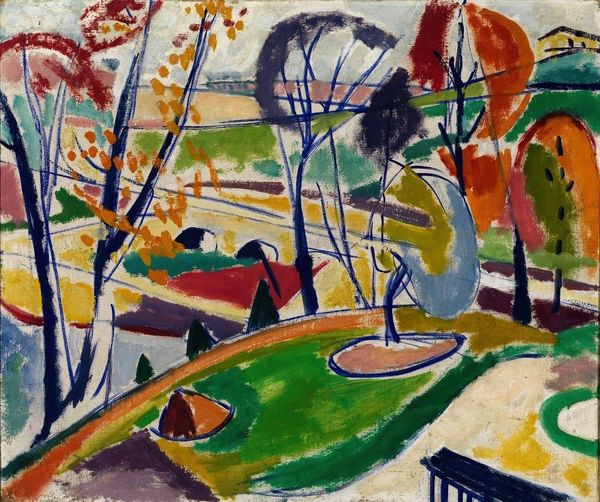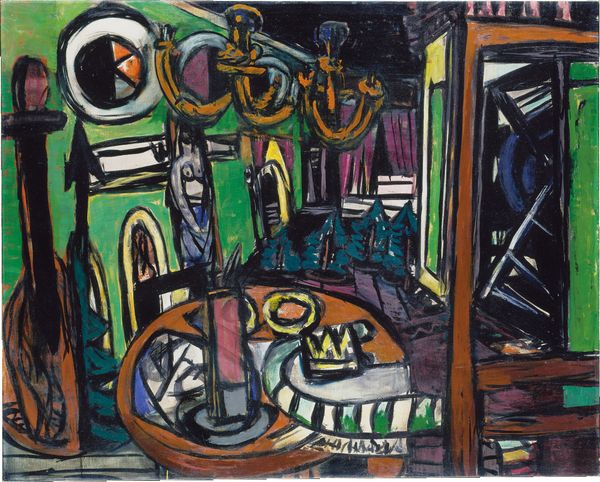
Copyright: Public Domain: Artvee
Curator: Here we have "Interior," an oil painting crafted around 1915 by Henry Lyman Saÿen. It pulses with the vibrant energy of Fauvism. Editor: My first impression? Pure, unadulterated joy. Those colours just burst off the canvas. I feel like I’ve walked into a Matisse painting after a good cup of coffee, everything is heightened! Curator: It's fascinating to consider Saÿen’s immersion in modernist currents. He’s abstracting reality, simplifying forms, and emphasizing this liberated use of color. It speaks to the early 20th-century avant-garde spirit. We could also consider the implications of representing domestic spaces in this radically new way. Editor: Domestic, yes, but not docile! That little table with the flowers is so lovingly rendered, yet surrounded by this controlled chaos. The brushwork is so expressive, you can almost feel him pushing the paint around, trying to get at something just beyond what he can see! I wonder what that something is… Curator: Saÿen trained in Paris, where he encountered Matisse, and this obviously changed everything for him. Yet what I find more revealing is what we may learn about his interior life from these types of images. Is there a dialogue with feminism or the changing role of women at play in such works, a comment on women's evolving domestic roles? Editor: Maybe... Or maybe he just saw the light hitting the flowers in a certain way and wanted to trap it forever in a riot of color and shapes? Art doesn’t always have to be some grand statement; sometimes, it’s just a beautiful accident! That abstracted space—it has this dreamy, otherworldly feel. Curator: While intuition is valuable, dismissing the potential historical or social resonances risks stripping the work of deeper meanings. We must ask what historical contexts can we locate to situate an artist in this moment, who benefits from it, who is overlooked. These critical questions still have relevance today. Editor: Okay, sure, analysis is great—but don't overthink it! Sometimes a painting is just…a really good painting. A burst of pure energy and feeling, capturing a fleeting moment, nothing more and nothing less. Curator: Precisely. This intersection of art, personal experience, and the social context creates a far more rewarding way of understanding the visual culture, in my view. Editor: Absolutely, and sometimes you need the academic dissection alongside that pure, gut-level reaction. Otherwise, you're missing half the fun, really.
Comments
No comments
Be the first to comment and join the conversation on the ultimate creative platform.
